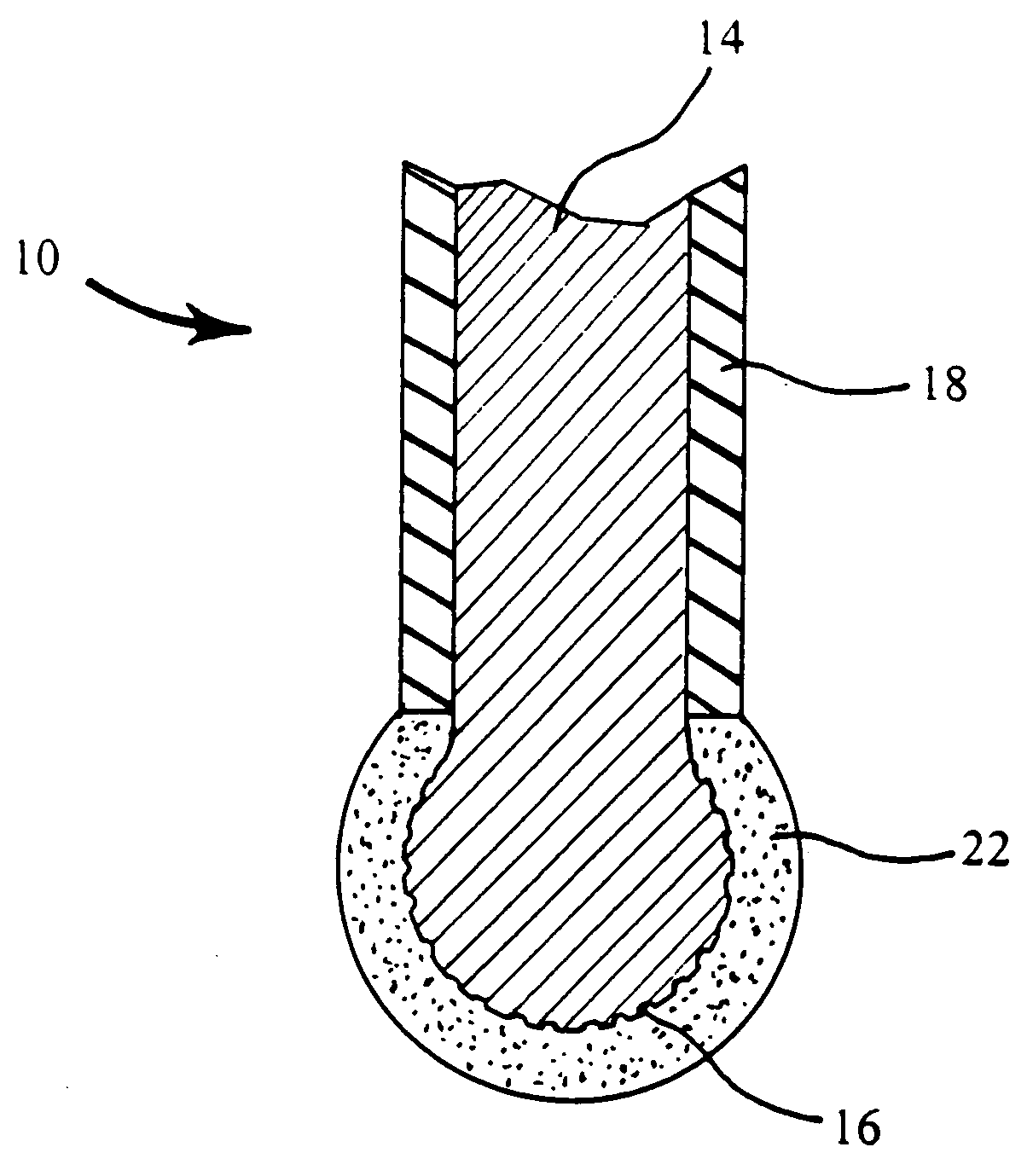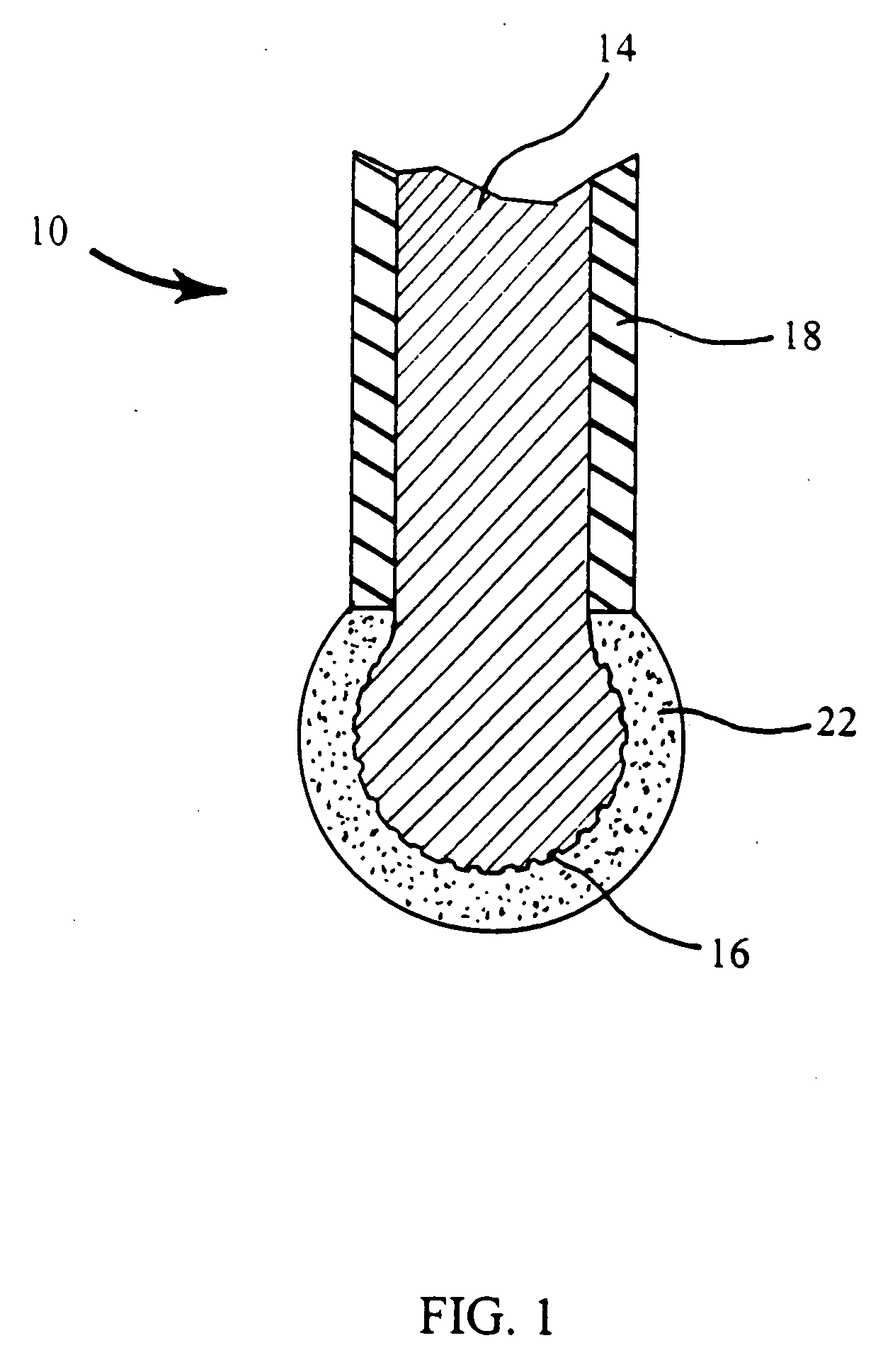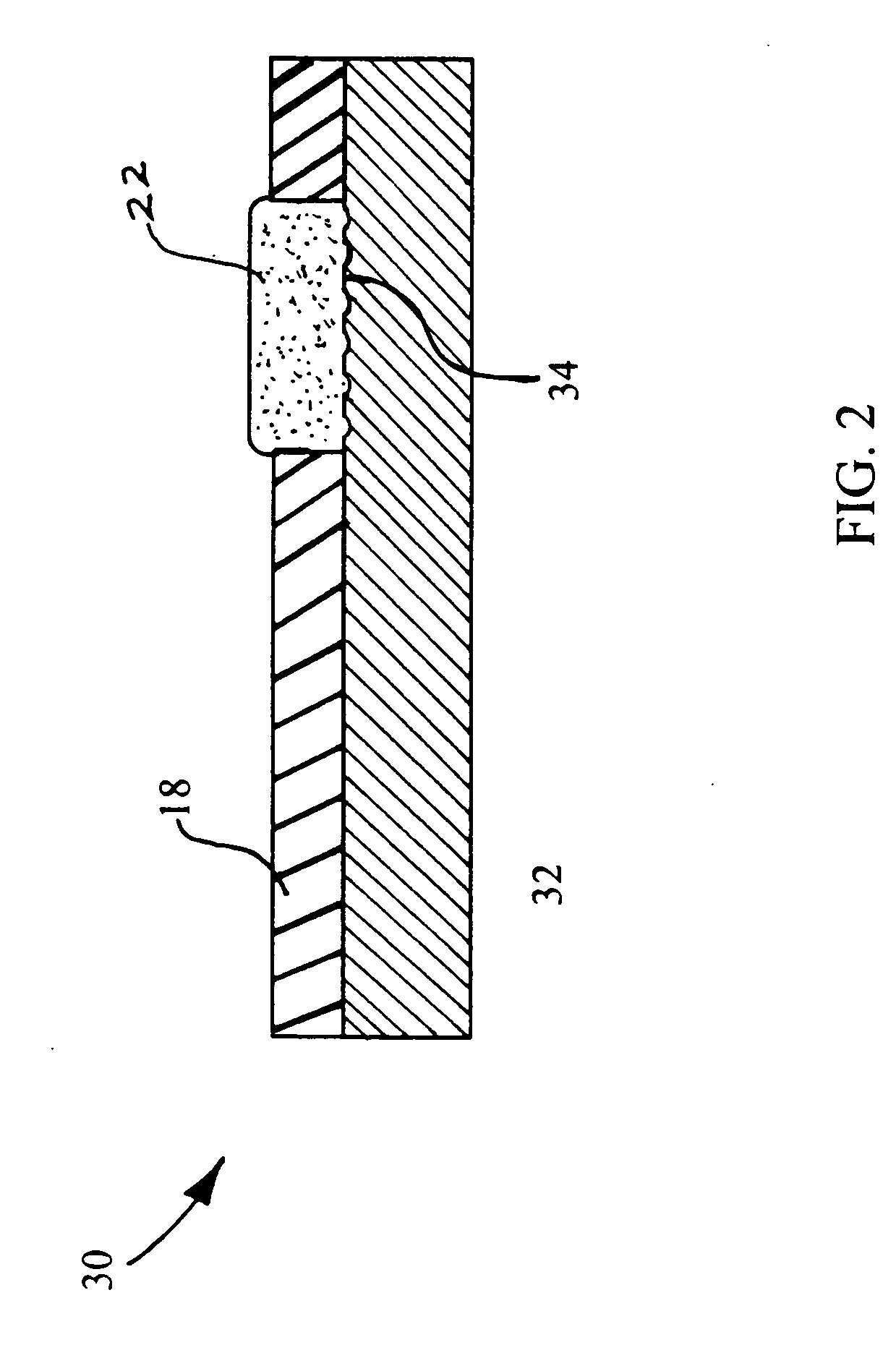Ion-selective solid-state polymeric membrane electrondes
a polymer membrane and electronde technology, applied in the direction of liquid/fluent solid measurement, material electrochemical variables, instruments, etc., can solve the problems of limited routine analytical application, cwes emf measurement tend to drift, irreproducible starting potentials of sensors, etc., to improve initial signal stability, minimal or no failure rate, and improve membrane adhesion
- Summary
- Abstract
- Description
- Claims
- Application Information
AI Technical Summary
Benefits of technology
Problems solved by technology
Method used
Image
Examples
example 1
[0068] Polytetramethyleneglycol ether thermoplastic polyurethane, sold under the trademark Pellethane, was purchased from Dow Chemical Co. (Midland, Mich.). The polymer M48 was provided by Medtronic, Inc. The plasticizer 2-nitrophenyl octyl ether (NPOE) was purchased from Fluka Chemica Biochemika (Ronkonkoma, N.Y.). The ion-exchanger dinonylnaphthalenesulfonate (DNNS) was purchased from King Industries (Norwalk, Conn.). The ter-polymer of poly(vinyl chloride) / poly(vinyl acetate) / poly(hydroxypropyl acrylate) (80%:15%:5%) was purchased from Scientific Polymer Products (Ontario, N.Y.). Tetradodecylmethylammonium tetrakis(4-chlorophenyl)borate (ETH 500) was purchased from Fluka (Ronkonkoma, N.Y.). Heparin (from porcine mucosa) and protamine (from herring) were purchased from Sigma Chemical Co. (St. Louis, Mo.).
[0069] In a specific illustrative embodiment of the invention, an ion-sensing electrode was prepared by the following method: an exposed end of an insulated silver wire was pitte...
PUM
 Login to View More
Login to View More Abstract
Description
Claims
Application Information
 Login to View More
Login to View More - R&D
- Intellectual Property
- Life Sciences
- Materials
- Tech Scout
- Unparalleled Data Quality
- Higher Quality Content
- 60% Fewer Hallucinations
Browse by: Latest US Patents, China's latest patents, Technical Efficacy Thesaurus, Application Domain, Technology Topic, Popular Technical Reports.
© 2025 PatSnap. All rights reserved.Legal|Privacy policy|Modern Slavery Act Transparency Statement|Sitemap|About US| Contact US: help@patsnap.com



